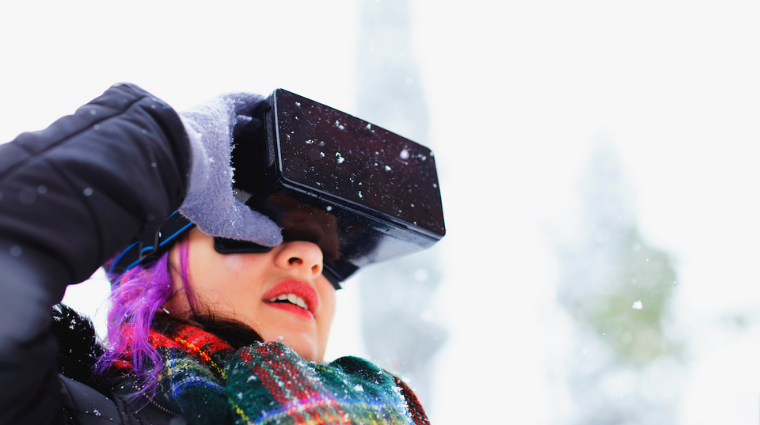By Roman Hayter
The community of La Loche recently held a ceremony with Saskatchewan Polytechnic to celebrate the achievements of their collaborative virtual reality wellness initiative. The research partnership began in 2020 with a focus on addressing disparities in mental health care access and support for Indigenous youth. Indigenous youth suffer from a suicide rate five to six times higher than non-Indigenous youth in Canada.
The project’s lead, Lindsey Boechler, said that the idea for the project came from her time as a paramedic working in rural communities. “It really roots back to years ago when I was a paramedic on the ambulance and I served a role in remote communities, so I had kind of witnessed or experienced the barriers they face when they’re trying to access care, such as mental health care, and some of the resources we take for granted,” said Boechler. “My first partnership was with the Dene high school, Grades Nine to Twelve, at the school in La Loche, and I’ve been working with the youth there and community members since to explore what current resources are in place, what works well, and what’s missing, and then how we can potentially supplement mental health care or wellness in the community for youth by using the technology.”
The project focuses on the pillars of safety, identity, and belonging, with the ultimate objective of developing a virtual reality platform to improve the well-being of Indigenous youth living in rural, remote, and northern regions.
“The first thing I envisioned was that if you can’t access counseling or clinical care, this might be a good alternative to accessing those resources that might have geographic barriers to use,” said Boechler. “They actually have expanded the project to see a much bigger picture, so now we’re looking more at a multi-pronged tool where we’re trying to secure funding to create a secure dedicated platform where youth can go on it and access a social platform to connect with other youth from other communities and reduce a sense of isolation, where they can engage in synchronous workshops with youth from other communities or access educational pieces and learn some information that they might not otherwise access.”
The project is currently still in the first phases of development, with the project still working on data collection and community collaboration.
